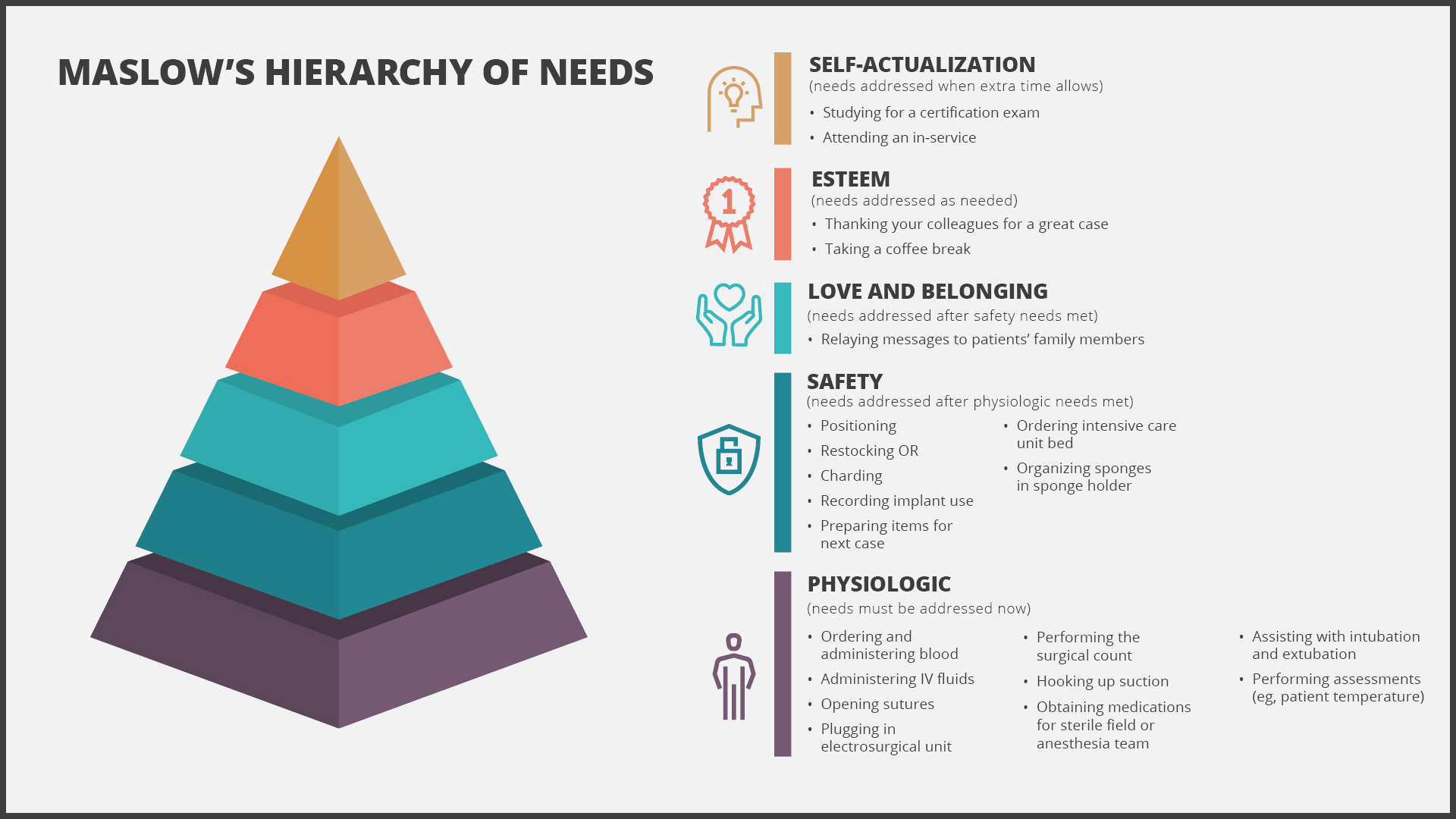Organizational Tips for Being One RN Circulator in a Room Full of Surgeons and Support Staff
By: Danielle Quintana, PhD, MSN, RN, CNOR(E)
Published: 8/30/2023
Perioperative nurse, only because multitasking ninja is not an official job title. If this sounds like your official motto, read on! By now, you are developing an “OR nurse’s ear,” or the ability to hear the slightest change in a patient’s heart monitor, regardless of how much background noise is occurring in the room (eg, suction machine, electrosurgical unit, music). Although you have morphed into a superhero, when four people call your name and there are 10 essential things to do all at once, it can certainly be overwhelming for one RN circulator to manage.
Perioperative nurses constantly prioritize, multitask, and triage information throughout their busy day. However, a key to becoming a super-organized circulator is to have an intentional plan. Antoine de Saint-Exupéry once said, “A goal without a plan is just a wish.” 2 Therefore, it is essential to have a strategy for being organized.
Organizational Tips
Consider following a consistent procedure to prepare each case you do, regardless of its complexity. For example:
- First, consult the surgeon’s preference card to identify what equipment and supplies are needed.
- Visit the patient in the preoperative area to conduct the interview and check the chart for H&P, lab work, and consent, etc.
- Verify that a type and screen or cross was ordered (if needed).
- Pull medication for the case and other specialty items (eg, implants, special sutures, devices, equipment).
- Prepare the surgical suite by using a “first used, first prepared” method, so that if the patient comes to the room earlier than you expected, you can get things started swiftly (and make up for the rest as you go!).
- Ensure the OR bed is set up correctly for the case, all linens are on the bed, the safety strap is ready, arm boards are available, and warm blankets are heating up. (This is done because, typically, the first thing that happens when the patient arrives in the OR suite is that you will transfer them to the OR bed.) Then, check that the sequential compression devices are ready to go and that a pillow is in place for under the patient’s knees.
- Tackle anesthesia needs next. See if someone has turned over the anesthesia machine for the next case. Is a clean suction canister with new Yankeur suction ready for induction?
- Organize equipment in the room from first-used (eg, grounding pad, electrosurgical unit, suction) to later-used items (eg, sponge bucket, sponge counter bags).
- After preparing the room, help the surgical technologist prepare the sterile field.
Help from the Hierarchy of Needs
After the case gets going, there is no doubt that necessities will pull you in many different directions at once. Therefore, you may want to use additional tools you learned in nursing school, like Maslow’s Hierarchy of Needs,1 to help you prioritize what to do. For example, blood may need to be brought to the room, a surgical intensive care unit bed reserved, and the patient’s family updated simultaneously. Using Maslow’s Hierarchy, ordering the blood comes first (physiologic need), ordering the bed comes second (safety need), and calling the family comes third (belonging and love). See Figure 1 for more examples.

Figure 1. Examples of RN Circulator Tasks and Priorities Based on Maslow’s Hierarchy of Needs1 Click to Enlarge
Why Not You?
When things get overwhelming during a busy case, sometimes the natural thought is to ask yourself, “Why me?” The answer to that question is simple: Why not you? No person can better handle each case’s simultaneous challenges than you! Be patient with yourself; becoming a master multitasker takes time, but you can certainly achieve your goals with proper planning.
References:
- Maslow AH. A Theory of Human Motivation. Hawthorne, CA: BN Publishing; 2020.
- de Saint-Exupéry. The Little Prince. Ware, England: Wordsworth Editions; 2018.

